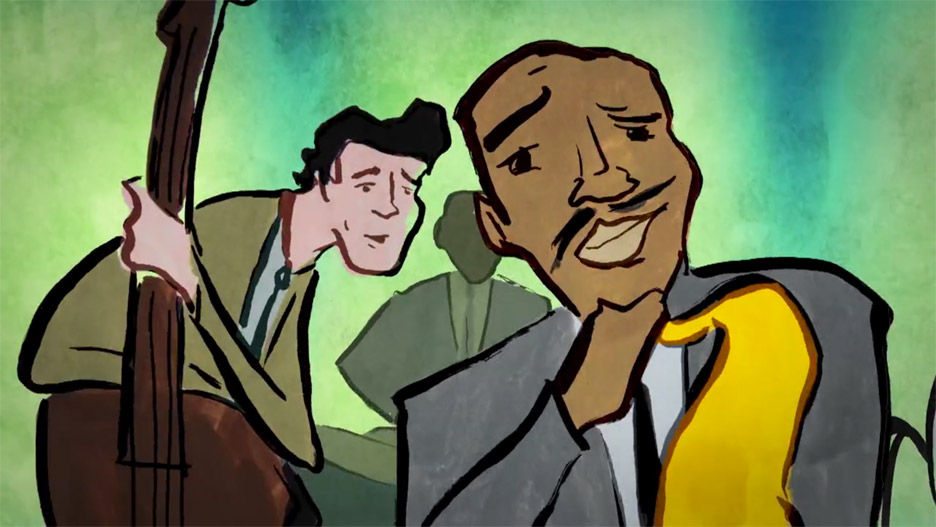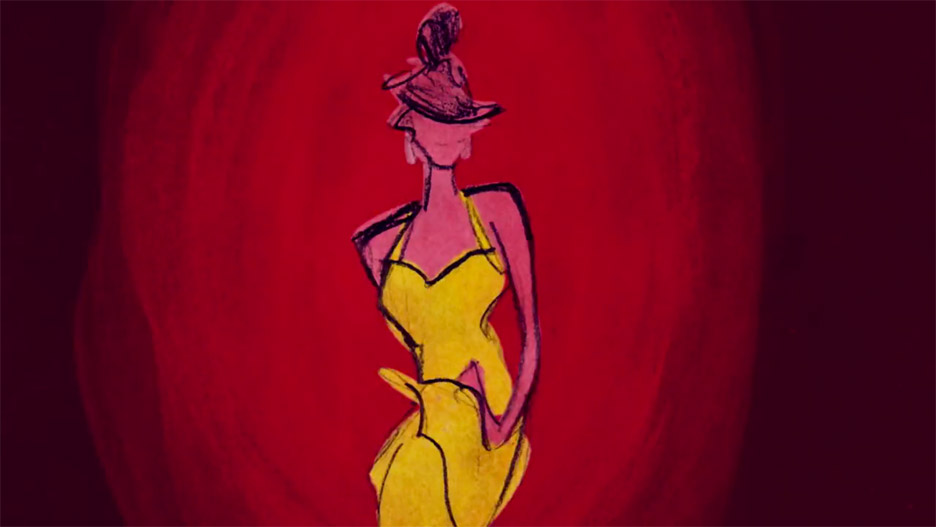Behold the Beautiful Video for David Gilmour’s “The Girl in the Yellow Dress,” Featuring 9,000 Hand-Drawn Frames of Animation
The animated video for David Gilmour’s “The Girl in the Yellow Dress” opens on a saxophonist with a familiar story—one so well-known to his bandmates they can read it on his face. But then the perspective shifts, and we follow instead the woman (or “girl”) of his woes, as she comes to see him play, gets ogled and turned into a fantasy by the men in the club, pursues the resident lothario, crushing the hearts of them all, including the saxophonist, who plays his blues instead of collapsing into a drink.

At least that seems to be the story, a typical nightlife scene rendered in a very dynamic, atypical way. The video, from a track off Gilmour’s 2015 album Rattle that Lock, was directed by Danny Madden for Ornana Films, who write, “The music video is made of about 9,000 frames of animation that were touched by several hands to get the layered contours, vibrant colors, and exaggerated character design of old French Lithograph posters. We wanted to create a moving version of that look, as if each frame had all the layers stamped on the page.”

An incredible amount of intensive artistic labor went into creating the boozy, swirling effects in each scene. “We animated with pencil, then contour lines were gone over with a brush tip marker. We used gouache to get nice life in the varying brushstrokes, then we layered the contours over the paint layer in the compositing step so that the colours would do interesting things when they ran together.” Maybe these images could be recreated convincingly with digital effects… but I suspect not.

The song “looks back at [Gilmour’s] earliest musical influence,” writes a Guardian review of the Rattle that Lock. If so, it’s a nascent influence that did not emerge often in his Pink Floyd playing, though the song may also indirectly pay tribute to the jazz-trained Richard Wright, memorialized elsewhere on the album. You can see several more scenes from this extraordinary video at Dezeen.
via Laughing Squid
Related Content:
David Gilmour Talks About the Mysteries of His Famous Guitar Tone
How Pink Floyd’s “Comfortably Numb” Was Born From an Argument Between Roger Waters & David Gilmour
Watch Tom Waits For No One, the Pioneering Animated Music Video from 1979
Josh Jones is a writer and musician based in Durham, NC. Follow him at @jdmagness
Behold the Beautiful Video for David Gilmour’s “The Girl in the Yellow Dress,” Featuring 9,000 Hand-Drawn Frames of Animation is a post from: Open Culture. Follow us on Facebook, Twitter, and Google Plus, or get our Daily Email. And don't miss our big collections of Free Online Courses, Free Online Movies, Free eBooks, Free Audio Books, Free Foreign Language Lessons, and MOOCs.
from Open Culture https://ift.tt/2Ko7VrV
via Ilumina
Comments
Post a Comment